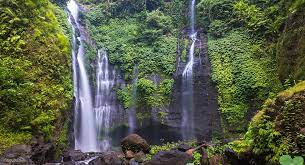The oceans are a vast ecosystem teeming with an incredible array of marine life. Within this complex web of organisms, sea turtles hold a significant ecological role. As gentle creatures that have roamed the seas for millions of years, turtles contribute to the delicate balance of marine ecosystems. However, human activities and environmental threats have led to a decline in turtle populations worldwide. Releasing turtles into the sea serves as a crucial conservation measure, ensuring the preservation of marine life's equilibrium. In this article, we will explore the importance of releasing turtles and the positive impacts they have on maintaining the balance of marine life.
Keystone Species:
Sea turtles are considered keystone species, meaning they play a disproportionately large role in maintaining the structure and function of their ecosystem. These ancient reptiles have existed for over 100 million years and have adapted to various marine habitats, making them indicators of ocean health. By preying on jellyfish, sea urchins, and seagrasses, turtles help control the populations of these organisms, preventing unchecked growth that could have detrimental effects on other species and marine habitats.
Ecosystem Engineering:
Turtles also contribute to the process of ecosystem engineering, shaping their environment through their feeding habits. For example, green sea turtles are known to graze on seagrass beds, maintaining their health and preventing overgrowth. This action enhances the productivity and biodiversity of seagrass meadows, which are vital nurseries and feeding grounds for numerous marine species. By preserving and enhancing seagrass beds, turtles indirectly provide habitats for fish, shellfish, and other invertebrates, ultimately supporting the entire marine food web.
Nutrient Cycling:
Turtles have a unique role in nutrient cycling within marine ecosystems. Their movements between terrestrial and marine environments help to transport vital nutrients, such as nitrogen and phosphorus. As turtles nest on beaches, they deposit nutrient-rich eggs and contribute to the fertility of coastal areas. When hatchlings emerge and crawl back into the sea, they provide a nutrient boost to the marine environment. These nutrients are essential for the growth of phytoplankton, microscopic plants that form the foundation of the marine food chain, ultimately benefiting a wide range of organisms, including fish, invertebrates, and even whales.
Genetic Diversity and Adaptation:
Releasing turtles into the sea is crucial for maintaining genetic diversity within their populations. The genetic makeup of individuals plays a vital role in their ability to adapt and survive in changing environments. By releasing healthy turtles into the ocean, we help sustain the resilience of their populations. Genetic diversity ensures that there is a wide range of adaptations within a species, allowing them to cope with natural disasters, climate change, and other environmental challenges. Preserving genetic diversity is vital to the long-term survival and evolutionary potential of sea turtles, contributing to the overall resilience of marine ecosystems.
The act of releasing turtles into the sea carries profound significance in maintaining the delicate balance of marine life. As keystone species, turtles contribute to the health and stability of marine ecosystems through their feeding habits, ecosystem engineering, and nutrient cycling. By releasing turtles, we safeguard their genetic diversity and enhance their ability to adapt to changing environmental conditions. Ultimately, protecting and preserving these majestic creatures is not only an ethical responsibility but also crucial for maintaining the resilience and biodiversity of our oceans. Through collective efforts and conservation initiatives, we can ensure that turtles continue to fulfill their role as guardians of the seas for generations to come.




